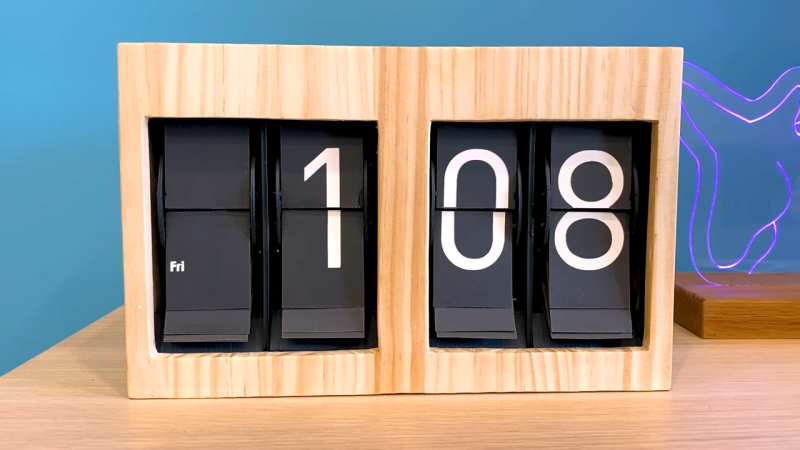Before LEDs became cheap enough to be ubiquitous, flip-card displays were about the only way to get a digital clock. These entirely electromechanical devices had their own charm, and they have a certain retro cachet these days. Apart from yard sales and thrift stores, though, they’re a bit hard to source — unless you roll your own, of course.
Granted, [David Huang]’s ESP32-based flip clock is worlds apart from the flip cards of the “I Got You, Babe” era. Unfortunately, the video below is all we have to go on to get the story behind this clock, but it’s pretty self-explanatory. [David] started the build by making the flip cards themselves, a process that takes some topological tricks as well as a laser cutter. 3D-printed spools are loaded with the cards, which are then attached to frames that hold a stepper motor and a Hall-effect sensor. The ESP32 drives the steppers via L298N H-bridge drivers, but it’s hard to say if there’s an RTC chip or if the microcontroller is just getting time via an NTP server.
[David] might not be the only one trying to recapture that retro look, but we’ve got to hand it to him — it’s a great look, and it takes a clever maker to not only build a clock like this, but to make a video that explains it all so clearly without a single word of narration.
[Bin Sun] sent us this tip. Thanks!
















Including the day of the week was something that I have not seen before on a flip clock!
I’ve tinkered with enough “flip clocks” over the years, to have a genuine appreciation for them! The mechanical engineering, alone, was amazing! They used continuously rotating synchronous motors to turn the drums that held the number plates… 60 of them for the minutes, and 12 for the hours. They were all gear-driven. There was a small spring-metal tab that applied tension to the tops of the plates, holding them in the right position for the full minute (or hour). These clocks were surprisingly accurate for a friction release, continuously rotating mechanism… the number plates flipped well within a second or so of the “exact time”… EVERY TIME!! There’s something to be said for the SKILL of the mechanical Engineers who came up with such a functional, and elegant system! :) Fond memories!
IIRC, there were 24 hour plates, and the flipped on the half hour.
Every other hour plate was “held back” by a tab on the 59 minute plate until it flipped.
True… but the minutes still flipped within a second or two just about every time. :)
Retro clocks always make me thing of Groundhog Day. It would be awesome if the stepper coils could be modulated to play I got you babe
Flip clocks are based on split-flap display, an Italian patent from 1965 by Solari, expired in 1987.
The history of this firm is fascinating, starting from 1725 A.D.
https://en.wikipedia.org/wiki/Solari_di_Udine
https://it.wikipedia.org/wiki/Solari_di_Udine
https://en.wikipedia.org/wiki/Split-flap_display
https://patents.google.com/patent/US3501761
While it was a non-narrated build, there were still a few nice details that I thought were quite interesting such as the construction of each (half) character and the blob of CA glue on the end of each support pin.
This is a very beautiful clock! Could you please make it in the 24-hour format? Thank you!